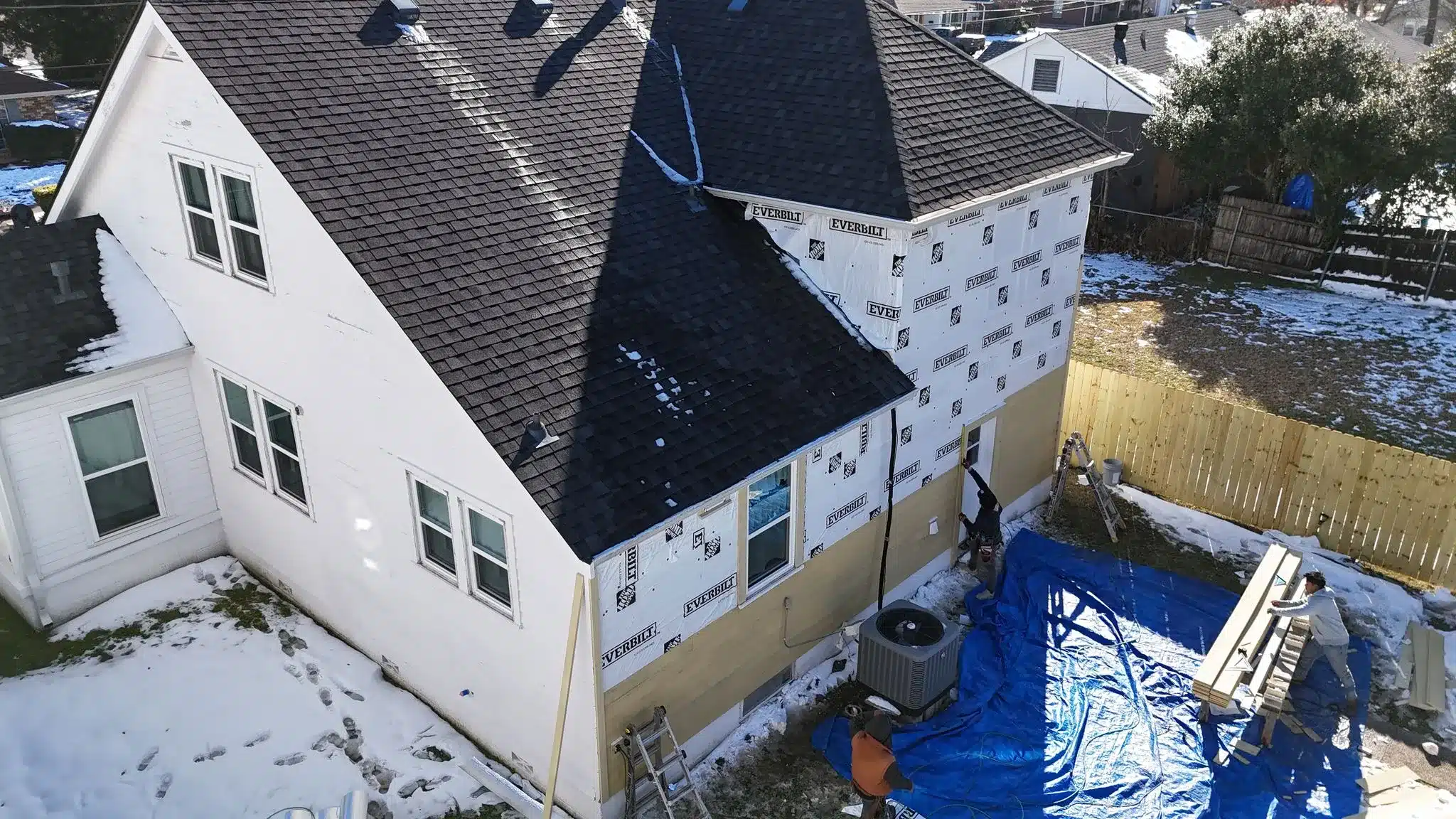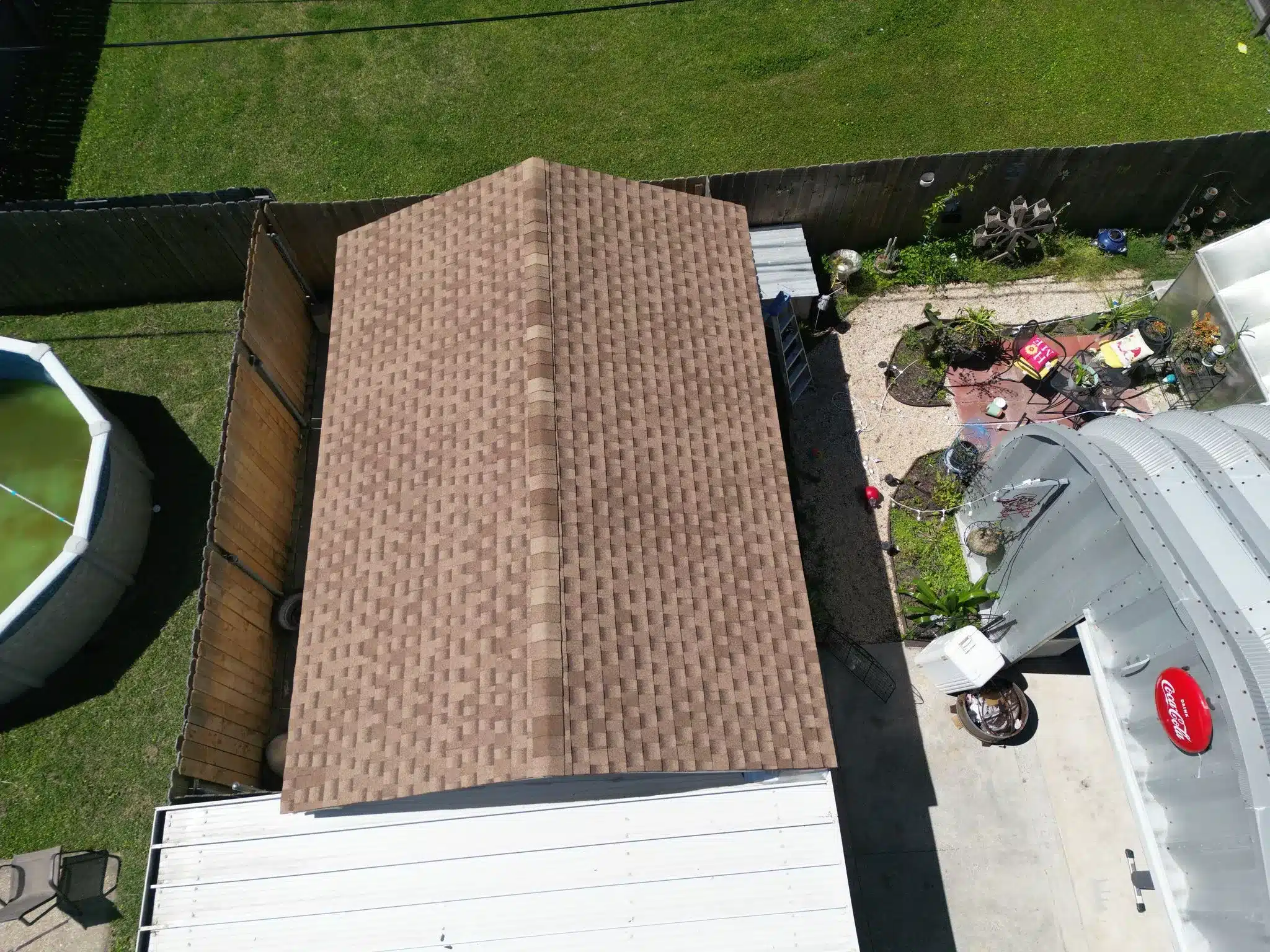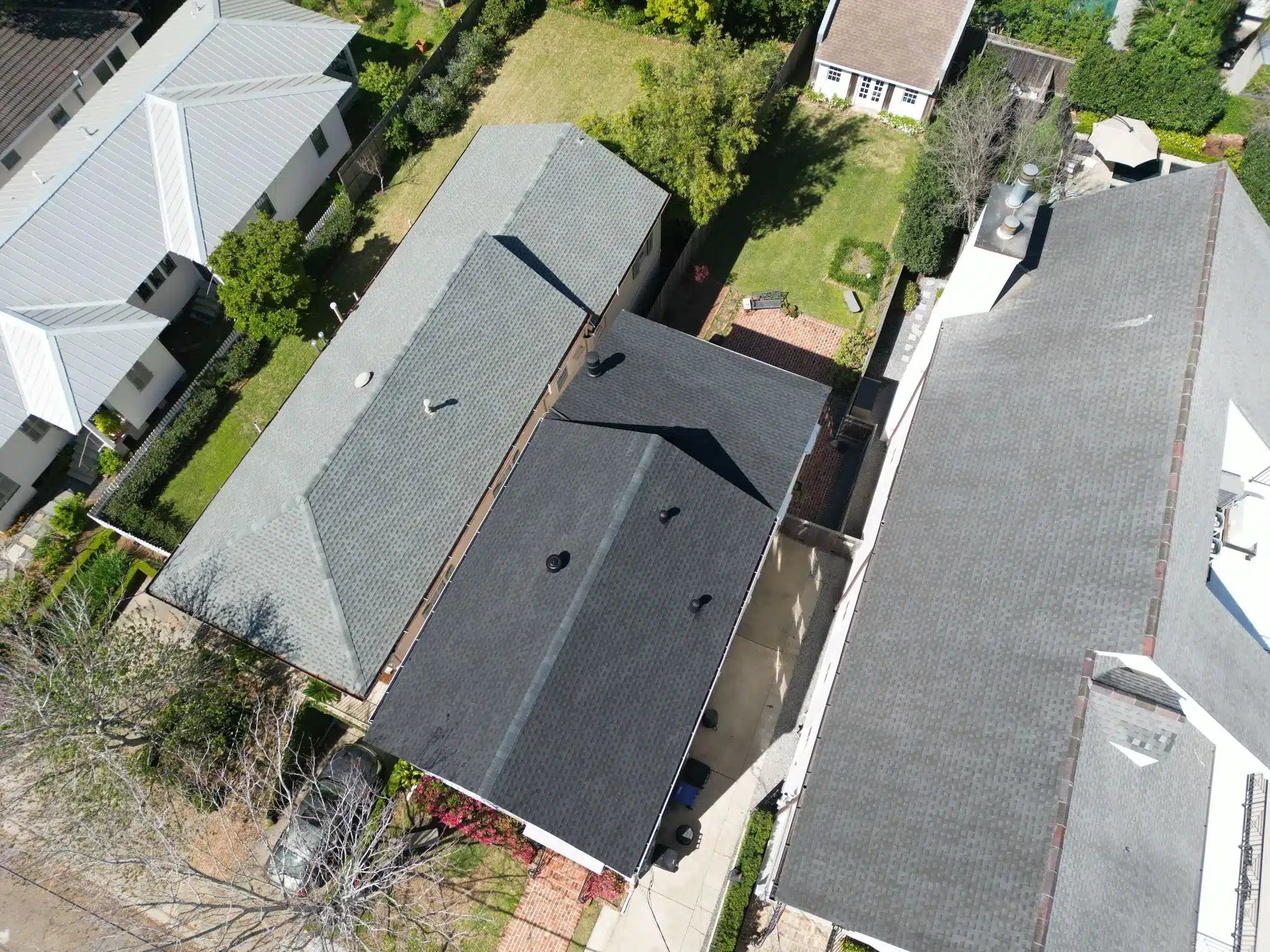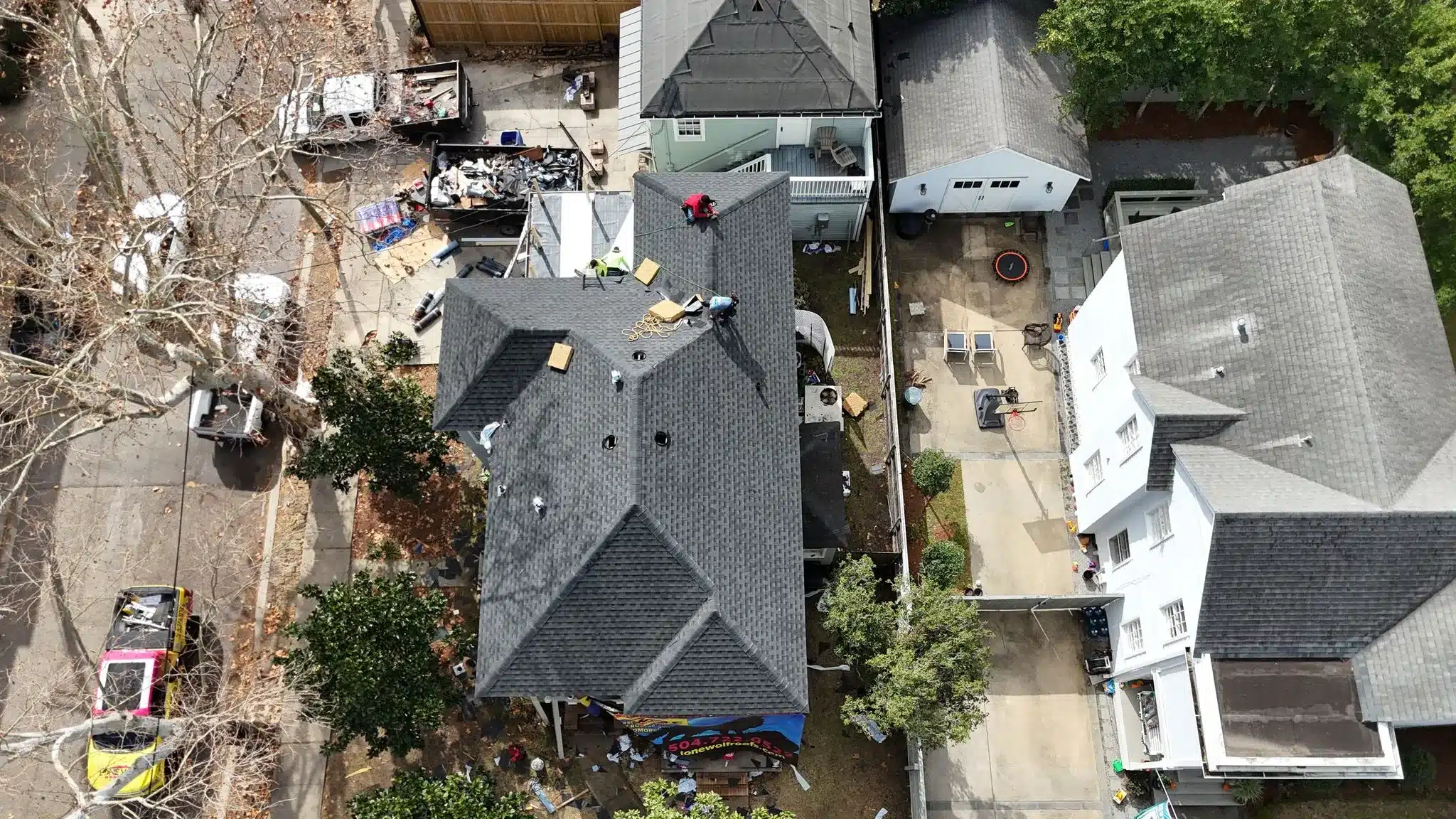Your roof does a lot more than keep you dry. It protects your home from the elements, improves energy efficiency, and adds curb appeal. But just like anything else in your home, your roof has a lifespan—and knowing how often a roof needs to be replaced can save you from costly surprises.
Whether you’re a homeowner, property manager, real estate investor, or planning to renovate or sell, understanding your roof’s condition is essential. This guide covers the average roof lifespan by material, signs that you need a new roof, inspection tips, and how to get help when it’s time for a replacement.
Roof Lifespan by Material: How Long Do Roofs Last?
Different roofing materials age at different rates. Here’s a breakdown of how long roofs last, based on material:
| Roofing Material | Average Lifespan |
| Asphalt Shingles | 15–30 years |
| Architectural Shingles | 25–40 years |
| Metal Roofing | 40–70 years |
| Clay or Concrete Tile | 50+ years |
| Slate Roofing | 75–100+ years |
| Wood Shakes/Shingles | 20–40 years |
| Flat Roofs (EPDM, TPO) | 15–25 years |
Asphalt & Shingle Roofing
Shingle roofing is one of the most common choices for residential homes due to its affordability and ease of installation. Standard asphalt shingles typically last 15–30 years, but architectural shingles—a thicker, higher-end option—can stretch that lifespan to 40 years with proper maintenance.
If you live in storm-prone areas like Metairie, your shingles may wear down faster. In these regions, working with experienced Metairie roofing contractors ensures your roof is built to handle local weather conditions.
Metal Roofing
Durable and modern, metal roofs can last between 40 to 70 years. They’re resistant to rot, mold, insects, and fire—making them ideal for homes that need extra protection from the elements. Although the upfront cost is higher, the long-term value makes metal roof replacement a smart investment for many homeowners.
Tile, Slate, and Wood Roofing
- Clay or concrete tiles can last over 50 years and offer great resistance to heat and UV damage.
- Slate roofing boasts a remarkable lifespan—often over a century—but requires specialized installation.
- Wood shakes provide a rustic charm and last around 20–40 years but demand regular upkeep in humid or rainy climates.
Flat Roofs
Flat roofs made from rubber (EPDM), TPO, or PVC materials typically last 15–25 years. These roofs are common in commercial buildings but are also used in modern residential architecture.
According to industry data, roof lifespan varies significantly depending on the material—ranging from 15 years for basic asphalt shingles to over 100 years for high-end slate roofing systems.
Signs You Need a New Roof
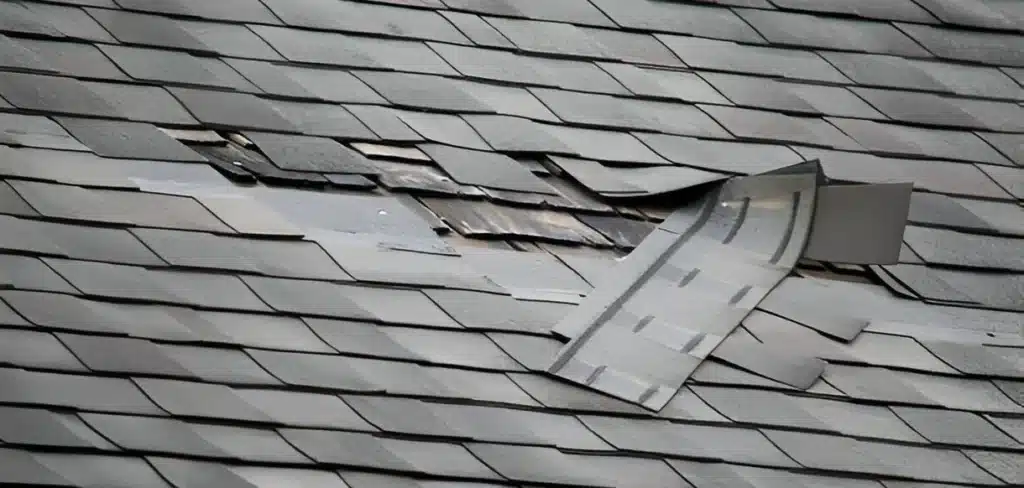
You don’t always need a ladder to tell when your roof is in trouble. Here are the key signs you need a new roof:
- Curling or Missing Shingles: Common in aging asphalt roofs.
- Water Leaks or Stains: Water damage inside the home is a serious red flag.
- Moss or Algae Growth: These can trap moisture and speed up roof deterioration.
- Sagging Roof Line: Could indicate rot or structural damage.
- Granules in Gutters: If you’re finding shingle granules in your gutters, your roof is losing protection.
If you’ve noticed any of these issues, it’s best to schedule a professional roof inspection to determine whether repairs or a full roof replacement service is needed.
What Affects a Roof’s Lifespan?
Besides the type of roofing material, these factors can influence how long your roof will last:
- Weather & Climate: Heavy rain, high humidity, and storms can shorten your roof’s life—especially in areas like Louisiana.
- Ventilation & Insulation: A well-ventilated attic helps prevent moisture buildup that causes rot.
- Installation Quality: Poor installation can lead to early failure, regardless of the material.
- Maintenance Routine: Regular cleaning, minor repairs, and gutter clearing can prolong your roof’s lifespan.
Roof Inspection Tips: Stay Ahead of Damage
Want to catch roof problems early? Here are some roof inspection tips:
- Use binoculars from the ground to look for missing or curling shingles.
- Check inside your attic for water stains, mold, or daylight peeking through.
- Clean out gutters to prevent water pooling and roof rot.
- After major storms, look for signs of storm damage like lifted shingles or debris buildup.
- Schedule professional roof inspections every 1–2 years.
In storm-prone regions, it’s smart to consider routine storm damage repair even if damage isn’t immediately visible.
FAQs: When to Replace Your Roof
How do I know when my roof needs replacing?
If your roof is over 20 years old or showing signs like curling shingles, leaks, or sagging, it’s likely time for a replacement. A professional inspection can help you decide if repairs are enough or if a full roof replacement service is needed.
What is the average lifespan of a roof?
On average, roofs last anywhere from 20–50 years depending on the material. For example, asphalt shingle roof lifespan ranges from 15–30 years, while metal and slate can last far longer.
Does a 30-year roof really last 30 years?
Not always. A “30-year” asphalt shingle roof might last only 20–25 years due to wear from weather, improper installation, or lack of maintenance. It’s important to monitor signs of wear and not rely solely on the warranty.
Can a roof last 50 years?
Yes—materials like metal, slate, and tile can easily last 50+ years. Proper installation and upkeep are key to maximizing lifespan.
What are the signs of roof failure?
Common signs of roof failure include repeated leaks that don’t go away with simple repairs, missing or broken shingles that leave your roof vulnerable to water damage, and sagging or uneven areas that may indicate structural issues beneath the surface. You might also notice daylight coming through the attic, which suggests gaps or holes in the roofing system. Another warning sign is excessive granule loss from asphalt shingles, often seen accumulating in gutters—this means your shingles are wearing out and losing their protective coating.
Will Insurance Cover a 20 Year-Old Roof?
Many homeowners ask: will insurance cover a 20 year-old roof? The answer often depends on your policy and the cause of the damage. Insurance typically covers storm-related damage, but not general wear and tear due to age. Knowing what your policy includes is essential before filing a claim.
How Much Does Roof Replacement Cost?
One of the biggest concerns for homeowners is how much roof replacement costs. The final price can vary based on several factors, including the type of roofing material you choose, the size and pitch of your roof, local labor costs, and whether the old roofing needs to be removed first. Regional pricing also plays a role, as materials and services may be more expensive in certain areas. On average, a roof replacement can cost anywhere from $7,000 to over $20,000. For the most accurate estimate, it’s always best to request a personalized quote from a reputable contractor.
Need Help? Contact Lone Wolf Roofing
If you’re starting to see signs of wear or just want peace of mind, Lone Wolf Roofing is here to help. We offer:
- Free roof inspections
- Full roof replacement services
- Emergency storm damage repair
- Help navigating your insurance claim
- Professional installation of shingle roofing and other materials
Serving homeowners across Louisiana, including Metairie roofing contractors, we’re your local experts committed to quality and care.
Don’t wait until small problems become big ones. Schedule your free inspection today and protect your home before the next storm rolls in.


